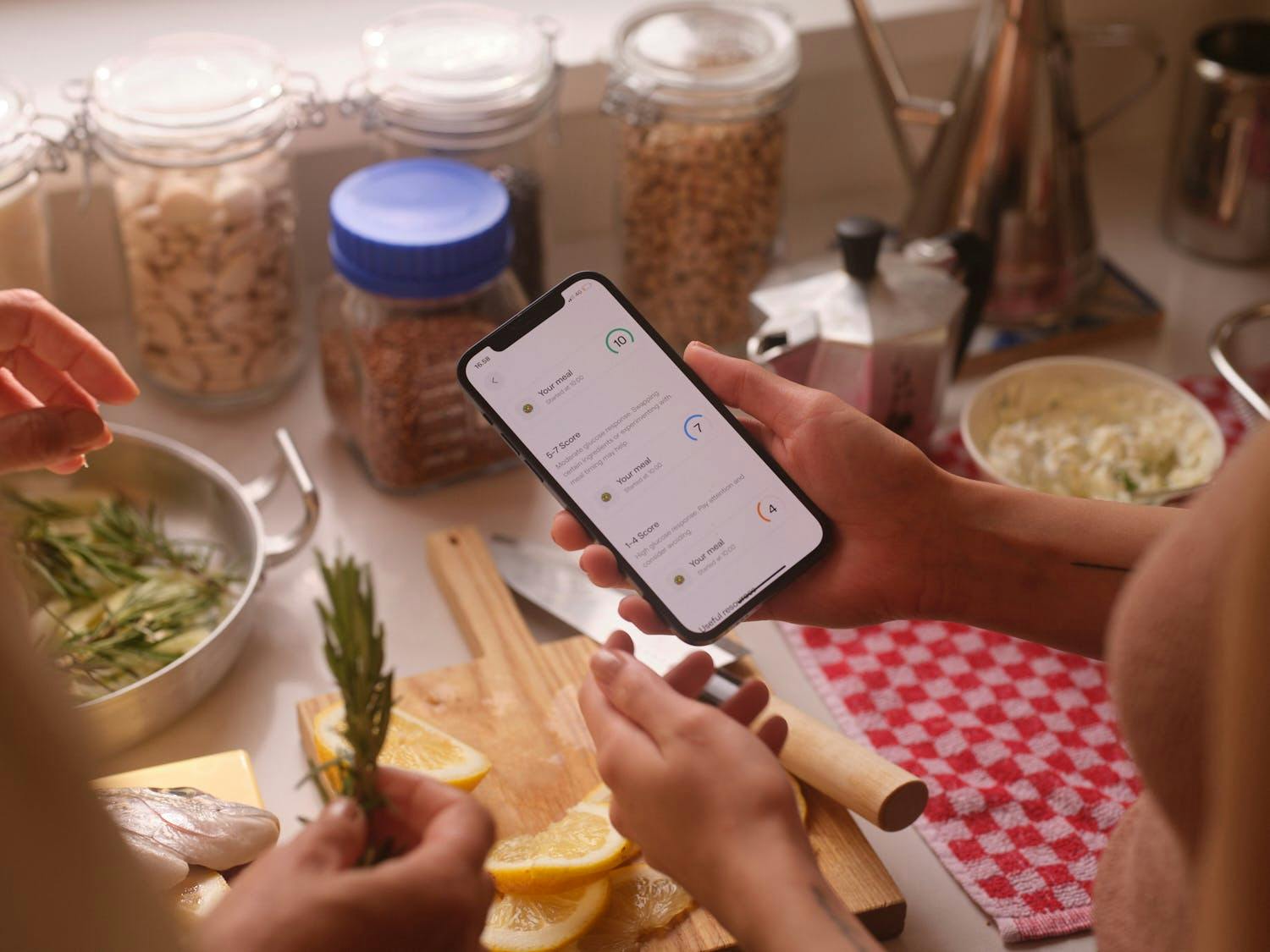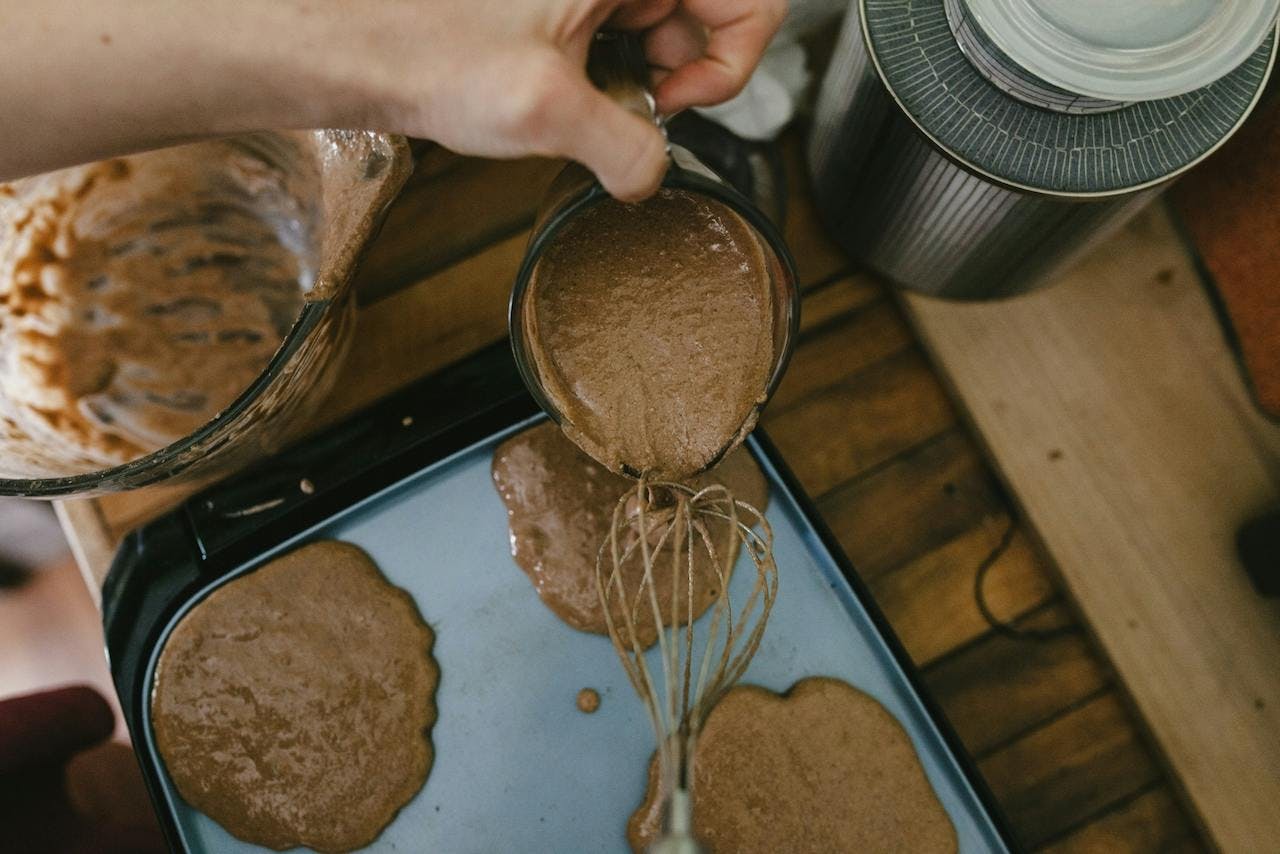Carbohydrates, found in foods like grains, starchy vegetables, and fruits, eventually break down into a sugar called glucose in your blood, which your body then converts into energy.
When you have insulin resistance, it’s like the door to the vault has become jammed and the key can no longer unlock it as efficiently. Because of this, it’s important to manage how quickly sugar gets into the bloodstream so that insulin has time to work its way into that lock, open the door, and pull the sugar in before it builds up in the blood.
Getting diagnosed with insulin resistance doesn’t have to mean giving up your favorite recipes and meals. Instead, focus on using insulin-resistance-friendly ingredients that don’t spike blood glucose levels and aren’t from ultra-processed sources that contain unnecessary ingredients.
It also doesn’t mean cutting out all carbs — just paying attention to the source of your carbs and what you eat them with. Here are five concrete and actionable tips to help you modify any recipe and make it more insulin-resistance friendly.
1. Try to include a source of protein with all carbohydrates
Pairing carbs with protein will slow down the absorption of the sugar and give your body more time to unlock your cells. One way to do this is to follow the plate method [1]. You want:
- ½ your plate to be non-starchy vegetables like onions, broccoli, or leafy greens.
- ¼ of your plate to be lean protein like chicken, fish, or tofu.
- The remaining ¼ of your plate to be high-fiber carbohydrates like beans, whole grains, or fruit, plus a serving of unsaturated fats like olive oil or nuts.
How to incorporate protein sources into your meals
Making chicken noodle soup? Here are some tips.
- Try visualizing the pot and having ¼ of your pot whole grain noodles, ¼ of your pot chicken, and the other half veggies.
- Think outside the box and try unique additions to your soup like carrots, yellow squash, and zucchini because eating the rainbow is important.
- Lastly, swap the butter for olive or avocado oil to get that serving of unsaturated fat.
Making your favorite smoothie recipe? This is another great opportunity to add protein.
- Try using a liquid yogurt like plain kefir instead of juice and rely on the natural sugar in the fruit to sweeten your smoothie.
- The plate method can apply here too — when building your smoothie make the first ¼ of the container a high-fiber carb (fruit), the next ¼ a protein source like whey or collagen, and the remaining half of the container a non-starchy vegetable like spinach or kale.
- Finally, add in your heart-healthy fat like 1 tbsp of nut butter or a handful of nuts. If you’re not used to veggie-forward smoothies, don’t worry — you’ll hardly taste the greens.
2. Power up your recipes with more fiber
Fiber is a type of carbohydrate that the body cannot break down, and can help regulate your insulin response. It slows down the absorption of sugar into the blood, giving your body time to send out the right amount of insulin (the keys) to open up your cells.
As it turns out, only 7% of adults in the US are gettting enough fiber [2]. The Dietary Guidelines for Americans recommends adults consume anywhere from 21-34 g of fiber per day at minimum [3]. This means:
- If you are eating 3 meals a day with snacks, you want to aim for at least 5-7 g per meal and 3-4 g per snack.
- For context, a medium apple has about 4 g of fiber and apple juice has 0 g.
- Choosing whole food/whole grain snacks can help you get closer to your fiber goal.
How to boost the fiber content in your recipes
- Try switching to the whole-grain version. For example, using whole grain noodles in your chicken noodle soup versus refined noodles can add 4 additional grams of fiber.
- You can also try doubling the portion of non-starchy vegetables if it is something like a soup and adding flaxseeds or chia seeds to your favorite baked good or salad dressing.
3. Experiment with the amount of sweetener your recipe requires
Sugar has become a pervasive ingredient, and sneaks its way into everything from barbecue sauce to bread. When we are used to this sweet taste, it can be hard to adjust. However, your taste buds are surprisingly adaptive. While your first step should be cutting back on the sugar amount, if you find that the recipe really requires the full amount it calls for to taste palatable, try using a sugar replacement that can be exchanged 1:1 like monk fruit sweetener. Monk fruit sweetener is granulated and can keep the structure of your recipe intact — but it won’t create as big of an insulin response because it is what we call a non-nutritive sweetener [4].
How to cut back on sweeteners in your recipes
- Try cutting the sugar by 25-50% as a first step, and see what happens.
- If your recipe calls for ½ cup sugar, try doing ¼ cup sugar + ¼ cup monk fruit sweetener.
- Since there is still some debate over whether or not NNS are safe for long-term use, you can think of these as a tool in your toolbox to help you towards needing less sweetener in your recipes. You can also try sweetening your recipe with a source of fiber-containing produce — like dates, applesauce, or sweet potato. These may still cause an insulin response, but the additional fiber can help minimize a glucose spike.
4. Leave the skin on your fruits and veggies
As we know, fiber is an essential component of making your recipes more insulin-resistance friendly. Leaving the skin on your fruits and veggies is another practical tip for increasing fiber reducing glucose fluctuation and insulin response.
An apple with the skin has 1.3 times more fiber than an apple without the skin and a potato with the peel has 2.5 times more fiber than a potato without the peel [5]. In fact, some sources have found that up to 31% of a vegetable’s total fiber content is in the skin — something to keep in mind if you’re trying to calculate your daily fiber intake but tend to remove the skin.
One study in a small group of healthy women found that eating 10 g of pectin (a soluble fiber found in fruits and vegetables) with a meal lowered postprandial plasma glucose concentrations (area under the curve) by an average of 20% [6]. Additionally, fruits and vegetables tend to contain more vitamins, minerals, and antioxidants when consumed with their skin [7].
How to incorporate more fiber-rich vegetables and fruits into your diet
- Eat more colorful fruits and vegetables, like cabbage, kale, carrots, sweet potato, raspberries, blackberries, unpeeled apples, and passion fruit.
- Avocados contain almost 10 g of fiber, and can easily be added on top of meals, in smoothies, and even in desserts.
- Add 1 tbsp of chia seeds or flaxseeds to yogurt, salad dressings, smoothies, and more.
5. Order matters — eat your protein/fiber first and your carbohydrates last
Sometimes it isn’t realistic to change a recipe, like when it is passed down from your great grandmother and it just feels wrong to alter it in any way. When that happens, lead with your protein and your fiber when eating that meal [8]. If you eat the carbohydrate first, it is more likely to instantly impact your blood sugar response. If you start with your protein and your fiber, that sugar is going to get into your bloodstream more slowly and help reduce your insulin response.
How to make the most of food order
- Have a salad rich in leafy greens before carb-heavy foods like pizza and pasta.
- If you’re ordering a plate with starches or refined carbs (like potatoes or bread), protein, and fiber-rich vegetables, take some bites of the protein and vegetables before the carbs.
- Taking a brisk walk after a meal high in carbohydrates can also help shuttle some of that sugar from your bloodstream into your cells. Think of insulin as the key and exercise as the powerful push that opens the door wider, allowing more sugar to enter your cells. If you are having one of those unchangeable recipes, try taking a walk with a friend or family member after enjoying your meal to make it more insulin-resistance friendly.
Key takeaways
- Include a source of protein with all carbohydrates. If you are having a bagel, add an egg. Having a banana? Dip it in some peanut butter.
- Focus on adding more fiber whenever possible by switching to whole grains and using whole fruit in your smoothies instead of juice.
- Experiment with the amount of sweetener your recipe needs. Remember, maple syrup, honey, and agave will still create an insulin response in your body. Try swapping half the recipe with a nonnutritive sweetener like monk fruit.
- Leave the peel on your fruits and vegetables to increase the amount of fiber in your recipe. Peel and skins often contain more vitamins, minerals, and antioxidants too!
- Order matters — eat your protein/fiber first and your carbohydrates last to help blunt your body’s insulin response.
Leslie Johnson is a Registered Dietitian with her Master’s degree in Nutrition, Interventions, Communication, and Behavior Change from the Friedman School at Tufts University and is currently working at Family Health Services as the Food Is Medicine Program Director and at Firelands Health as an outpatient dietitian in the Firelands Center for Coordinated Care. She is passionate about all people having access to fresh, nutritious food that can help keep their bodies healthy and works to incorporate nutrition science, communication, and food equity in her everyday practice. You can find more information on her website.
References:
- https://professional.diabetes.org/pel/plan-your-plate-english
- https://nutrition.org/most-americans-are-not-getting-enough-fiber-in-our-diets/
- https://www.dietaryguidelines.gov/sites/default/files/2021-03/Dietary_Guidelines_for_Americans-2020-2025.pdf
- https://www.heart.org/en/healthy-living/healthy-eating/eat-smart/sugar/nonnutritive-sweeteners-artificial-sweeteners
- https://www.med.umich.edu/mott/pdf/mott-fiber-chart.pdf
- https://pesquisa.bvsalud.org/portal/resource/pt/wpr-645288
- https://www.ncbi.nlm.nih.gov/pmc/articles/PMC9273365/#B1
- https://www.ncbi.nlm.nih.gov/pmc/articles/PMC4876745/


